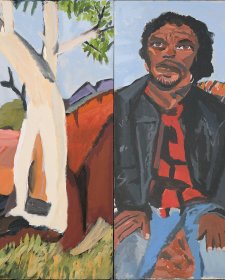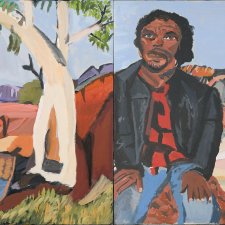Brenda L Croft's portrait of acclaimed Bundjalung/Lama Lama singer/songwriter and activist Kev Carmody (b. 1946), from the series Men of High Degree, is part of her ongoing project to represent and honour important First Nations people. Croft's process begins with the creation of a tintype, a 19th-century technique for making photographs in which an image is inscribed on a thin piece of metal. She then digitally copies and enlarges the image on the original tintype, creating a larger-than-life head study. For Croft, size and technique are conceptual, political strategies, in which she and the sitter claim space within a photographic tradition that has historically marginalised and exploited First Nations sitters. Carmody's 1988 album Pillars of Society has been described as 'arguably the best protest album ever made in Australia'. His rendition of the land rights anthem 'From Little Things Big Things Grow', which he co-wrote with Paul Kelly, tells the story of the Gurindji community's 1966 Wave Hill Station Walk Off. In 2010 the song was added to the National Film and Sound Archive's Sounds of Australia register of iconic audio moments.
Purchased 2023
© Brenda L Croft/Copyright Agency, 2024



On one level The Companion talks about the most famous and frontline Australians, but on another it tells us about ourselves.



Linda Burney, Brenda Croft and Darrell Sibosado share memories of Michael Riley and his photographic practice.



from Saturday 15 March
Gallery Three features major new acquisitions, collection highlights and favourites.